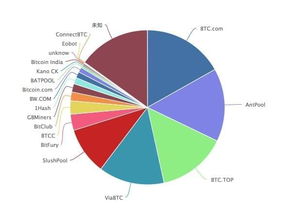Introduction to Blockchain Mining Pools

Blockchain mining pools have become an integral part of the cryptocurrency mining ecosystem. As the complexity of mining algorithms increases, solo mining has become less feasible for most individual miners. Mining pools offer a collective approach to mining, allowing participants to combine their computational power and share the rewards proportionally to their contribution. In this article, we will explore the concept of blockchain mining pools, their importance, and how they operate.
What is a Blockchain Mining Pool?

A blockchain mining pool is a group of miners who work together to mine blocks and validate transactions on a blockchain network. By pooling their resources, miners can increase their chances of finding a block and earning rewards. When a block is successfully mined, the rewards are distributed among the pool members based on the amount of computational power they contributed to the mining process.
Why Use a Mining Pool?

Mining cryptocurrencies on your own can be challenging due to the following reasons:
High Difficulty Levels: As more miners join the network, the difficulty of mining increases, making it harder for individual miners to find a block.
Longer Wait Times: Without a mining pool, individual miners may have to wait for a very long time to find a block and earn rewards.
Scalability: Mining pools allow miners to scale their operations without the need for additional hardware or infrastructure.
How Do Mining Pools Work?

Mining pools operate by following these steps:
Joining a Pool: Miners connect to a mining pool using a mining software that supports the pool's protocol.
Submitting Work: Miners submit their computational work to the pool, which is then combined with the work of other miners.
Proof of Work: The combined work is sent to the blockchain network for validation. If the network accepts the work, a block is added to the blockchain.
Reward Distribution: When a block is successfully mined, the rewards are distributed among the pool members based on their contribution to the mining process.
Choosing the Right Mining Pool

Selecting the right mining pool is crucial for maximizing your mining profits. Here are some factors to consider when choosing a mining pool:
Pool Fees: Mining pools charge a fee for their services. Lower fees can lead to higher profits, but it's important to balance fees with the pool's reliability and performance.
Payment Methods: Different pools offer various payment methods, such as PPS (Pay Per Share), PPLNS (Pay Per Last N Shares), or SOLO (Selfish Orphaned Logic). Choose a payment method that aligns with your mining goals and preferences.
Location and Currency: Some pools are geographically focused, which can affect the mining difficulty and reward distribution. Additionally, pools may offer different payment currencies, such as Bitcoin, Litecoin, or Ethereum.
Reliability and Performance: A reliable mining pool with good performance can help you mine more efficiently and reduce downtime.
The Future of Mining Pools

As the cryptocurrency market continues to evolve, mining pools are likely to play an even more significant role in the mining ecosystem. With the increasing difficulty of mining and the rise of new blockchain technologies, mining pools will need to adapt to new challenges and opportunities. Some potential future developments include:
Improved Efficiency: Mining pools may develop more efficient algorithms and infrastructure to reduce costs and increase profits.
Integration with Blockchain Technologies: Mining pools may integrate with new blockchain technologies, such as proof-of-stake (PoS) systems, to offer alternative
